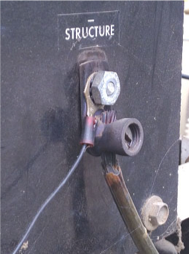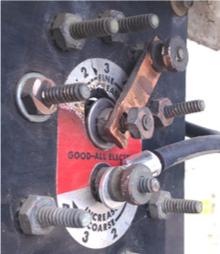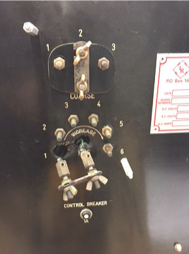Poor or defective cathodic protection electrical connections can be the cause of issues in anode systems, rectifiers, test lead cables, test station connections and more. Many of these issues can be avoided.
Types of Electrical Connections
An electrical connection can be defined as connecting two or more metallic conductors together to establish continuity between the individual conductors. The purpose of an electrical connection is to establish low electrical “contact resistance” between the conductors. There are two types of cathodic protection electrical connections. Each uses a different method to achieve the proper connection.
Metallurgical Connections
A metallurgical connection is very strong and reliable. Aside from extreme corrosion issues, poor design or an improperly built connection, metallurgical connections are permanent and immune to progressive increase in contact resistance. Types of metallurgical connections include:
- Soldering – A process to join two or more metal conductors by melting a filler metal (solder) into the joint between the two conductor metals. Solder has a relatively low melting point and is used on many electronic or electrical components.
- Brazing – This process is like soldering except higher temperatures are employed. The filler metal used also has a lower melting point than the conductors being joined.
- Exothermic Welding – A welding process that employs molten metal to join conductors. This process employs an exothermic reaction of a thermite composition to heat the metal. The chemical reaction that produces the heat is an aluminothermic reaction between aluminum powder and a metal oxide.
- Welding – A process of fusion by melting both metals together, not usually associated with electrical connections.
Mechanical Connections
A mechanical connection occurs when two or more conductors are in direct physical contact. The configurations and methods used to establish this physical contact are endless. When done properly, they are very reliable. These connections must be protected against corrosion or they will fail prematurely.
A familiar mechanical connection is a power cord from an electronic device, appliance or power tool that plugs into an electrical wall outlet. This mechanical connection requires physical pressure to be exerted between the metallic contacts to function properly.
In CP, there are many types of electrical connections. These include crimps, wire nuts, split bolts, ring terminals and more. For a good mechanical connection to occur, the conductors for the connection must be clean (free of any oxides, debris, corrosion, etc.). The term, “bright, shiny metal”, applies here. The conductors must fit together properly and have good contact pressure between all the conductors. A good or proper connection has low contact resistance and does NOT generate heat when electrical current is applied.
A bad or poor connection occurs when a mechanical connection is dirty and or lose. Any dirt, oxide or similar contaminant prevents proper electrical contact between the metallic conductors and increases the “contact resistance” of the connection. Even a clean connection will not work well if the conductors are “loose” or when there is not enough pressure in the connection.
A compromised or poor connection, and in instances where relatively high currents are required, can “heat” the connection. How hot the connect gets is an actual ohmic value of the contact resistance and the magnitude of current in the circuit. To exacerbate the condition, the more heat generated will cause the contact resistance to increase, thereby creating more heat. This regenerative process can result a total failure of the electrical device.
The Results
A poor or bad electrical connection can result in:
- Failure of a rectifier due to lose adjustment taps or other connections
- Failure of a CP system due to lose connections in a junction box or rectifier.
- Failure of cable splices
- High resistance connections in a bond or resistor box



Methods to detect possible connection problems in a high current circuit can include:
- Color or surface appearance changes (darkens)
- Abnormally elevated temperature
Note: Just because a connection is tight does not guarantee that it has low contact resistance. This occurs in CP rectifiers very often and is extremely costly.
No matter the connection type, there is a technique and process to making a good electrical connection. When done correctly, the connection will last for years. To achieve this, maintenance may be needed depending on the connection, the amount of current and the environment along with measures to protect the splice or connection, such as splice kits, anti-corrosion coatings or similar.
